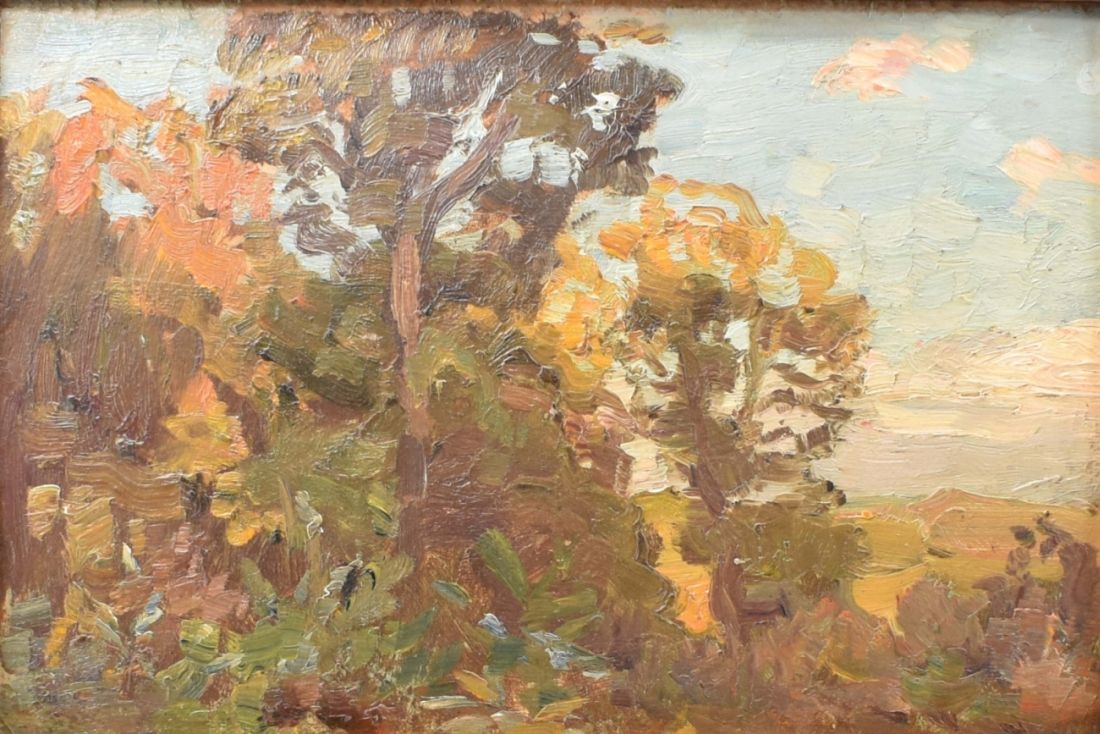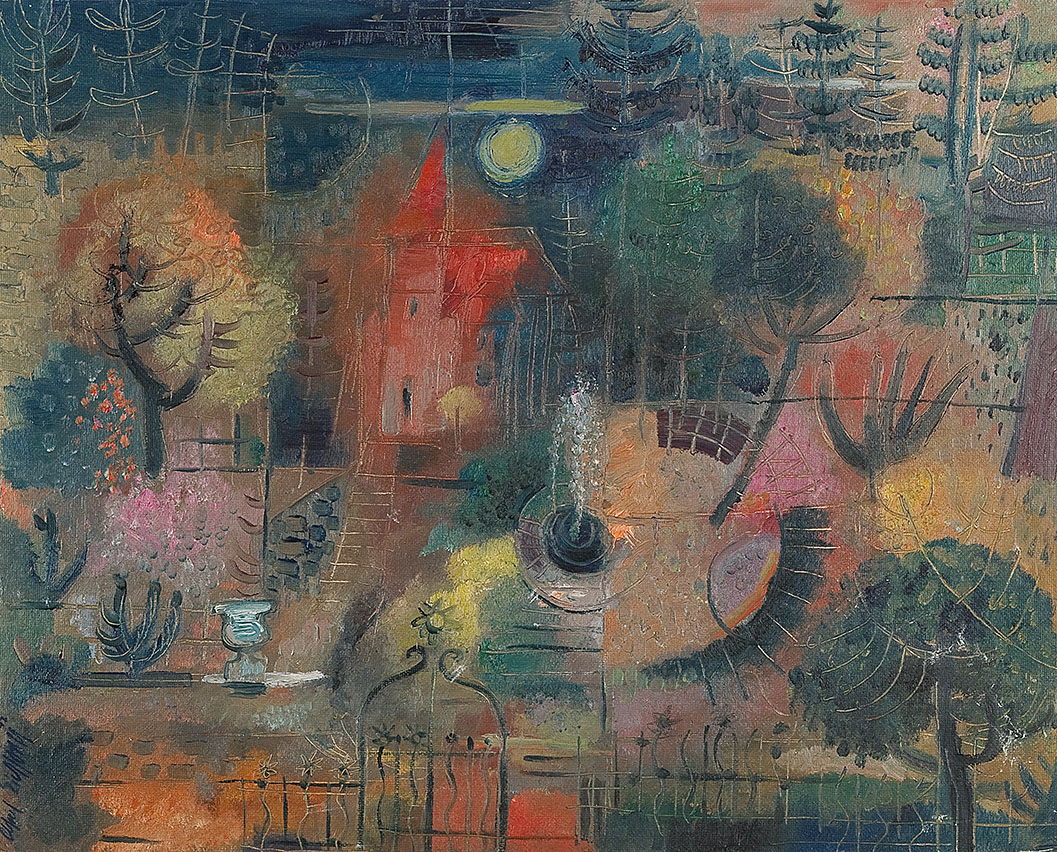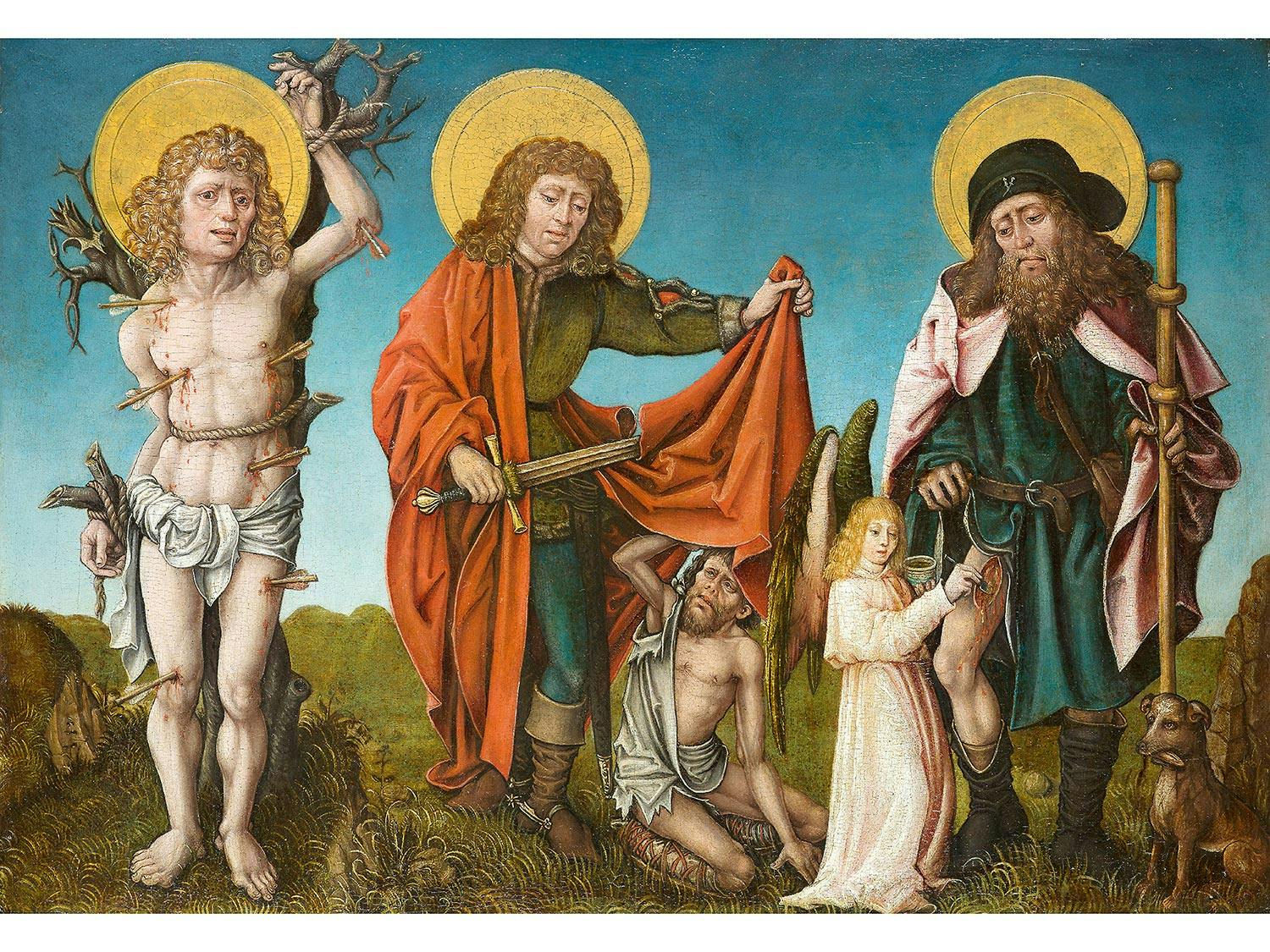Swabian Painter The Washing of the Feet, cut from a Plenarium on paper, Germany, likely Swabia, c.1450-70 A very fresh example of 15th-century German pen-and-wash technique from a Plenarium written in the Swabian dialect of High German. c.109 x 158mm. A cutting from a German Plenarium illustrating the Mary Magdalene washing Christ's feet (John 12: 1-8) with colored washes applied to leave dramatic highlights of exposed white paper, fragment of 14 lines of text in two columns on the reverse from John 12:12 in Swabian dialect, containing the Gospel reading for Palm Sunday. Mounted and framed. Provenance: The leaf comes from a Plenarium, a more specialised version of a Gospel Lectionary that included readings from the Epistles, in which readings for the feasts of the saints were arranged according to the liturgical year, since the verso of a sister leaf of the Stoning of St Stephen bears a rubric for the Gospel reading for the feast of St Stephen and the Epistle reading for the feast of St John. Such a Lectionary, written in a Swabian dialect was most likely for a lay owner to use for study or to follow along with the mass. Sister Leaves: The recorded cuttings from this manuscript are all from readings for the week after Christmas or the week before Easter, and it is probable that these might have been spoils from each end of a damaged single volume covering Christmas to Easter, one manuscript in what would have been a richly illustrated four-volume set for the entire Church year. 1. The Stoning of St Stephen (formerly Michele Cavalieri [1813-1890], Milan and Antiquariat Dr Jörn Günther). 2. The Massacre of the Innocents (Private Collection). 3. Christ before the High Priest Annas (Department of Prints and Drawings, Art Institute of Chicago, formerly Bernard Breslauer [1918-2004]: his sale Christie's, 11 December 2002, lot 8). Illumination: The taut pen lines give a vibrant energy to the figures, reinforced by the rapid and effective painting. The coloured washes are applied to leave dramatic highlights of exposed white paper so that the figures have a rounded solidity and plausibility. The style, with its semi-translucent pigments, line drawing heightened with coloured wash, and stocky, expressive figures, as well as the dialect of the text on the reverse localises the manuscript to Swabia, where there was a thriving market for illustrated books on paper (see Lehmann-Haupt). These were generally secular romances or chronicles, such as the Augsburg Chronicle of which at least five illustrated copies are known dating from 1457-c.1490 (N. Ott, 'Frühe Augsburger Buchillustration,' Augsburger Buchdruck und Verlagswesen, H. Gier and J. Janota eds., 1997, pp.201-241, esp. pp.219-25). Books used in the liturgy were in Latin and usually on parchment and manuscripts of the German Plenarium text were rarely illustrated; this Plenarium was presumably made for a lay person to follow or study the liturgical readings, with the instant comprehensibility of the vernacular text matched by the immediacy of the vivid pictures. This desire for full participation in church ritual would be a contributory factor in the Reformation. In the middle of the 19th century the manuscript was already in single leaves, since the leaf of the Stoning of Saint Stephen was found then in the Collection of Michele Cavaleri in Milan.
Swabian Painter The Washing of the Feet, cut from a Plenarium on paper, Germany, likely Swabia, c.1450-70 A very fresh example of 15th-century German pen-and-wash technique from a Plenarium written in the Swabian dialect of High German. c.109 x 158mm. A cutting from a German Plenarium illustrating the Mary Magdalene washing Christ's feet (John 12: 1-8) with colored washes applied to leave dramatic highlights of exposed white paper, fragment of 14 lines of text in two columns on the reverse from John 12:12 in Swabian dialect, containing the Gospel reading for Palm Sunday. Mounted and framed. Provenance: The leaf comes from a Plenarium, a more specialised version of a Gospel Lectionary that included readings from the Epistles, in which readings for the feasts of the saints were arranged according to the liturgical year, since the verso of a sister leaf of the Stoning of St Stephen bears a rubric for the Gospel reading for the feast of St Stephen and the Epistle reading for the feast of St John. Such a Lectionary, written in a Swabian dialect was most likely for a lay owner to use for study or to follow along with the mass. Sister Leaves: The recorded cuttings from this manuscript are all from readings for the week after Christmas or the week before Easter, and it is probable that these might have been spoils from each end of a damaged single volume covering Christmas to Easter, one manuscript in what would have been a richly illustrated four-volume set for the entire Church year. 1. The Stoning of St Stephen (formerly Michele Cavalieri [1813-1890], Milan and Antiquariat Dr Jörn Günther). 2. The Massacre of the Innocents (Private Collection). 3. Christ before the High Priest Annas (Department of Prints and Drawings, Art Institute of Chicago, formerly Bernard Breslauer [1918-2004]: his sale Christie's, 11 December 2002, lot 8). Illumination: The taut pen lines give a vibrant energy to the figures, reinforced by the rapid and effective painting. The coloured washes are applied to leave dramatic highlights of exposed white paper so that the figures have a rounded solidity and plausibility. The style, with its semi-translucent pigments, line drawing heightened with coloured wash, and stocky, expressive figures, as well as the dialect of the text on the reverse localises the manuscript to Swabia, where there was a thriving market for illustrated books on paper (see Lehmann-Haupt). These were generally secular romances or chronicles, such as the Augsburg Chronicle of which at least five illustrated copies are known dating from 1457-c.1490 (N. Ott, 'Frühe Augsburger Buchillustration,' Augsburger Buchdruck und Verlagswesen, H. Gier and J. Janota eds., 1997, pp.201-241, esp. pp.219-25). Books used in the liturgy were in Latin and usually on parchment and manuscripts of the German Plenarium text were rarely illustrated; this Plenarium was presumably made for a lay person to follow or study the liturgical readings, with the instant comprehensibility of the vernacular text matched by the immediacy of the vivid pictures. This desire for full participation in church ritual would be a contributory factor in the Reformation. In the middle of the 19th century the manuscript was already in single leaves, since the leaf of the Stoning of Saint Stephen was found then in the Collection of Michele Cavaleri in Milan.









Try LotSearch and its premium features for 7 days - without any costs!
Be notified automatically about new items in upcoming auctions.
Create an alert